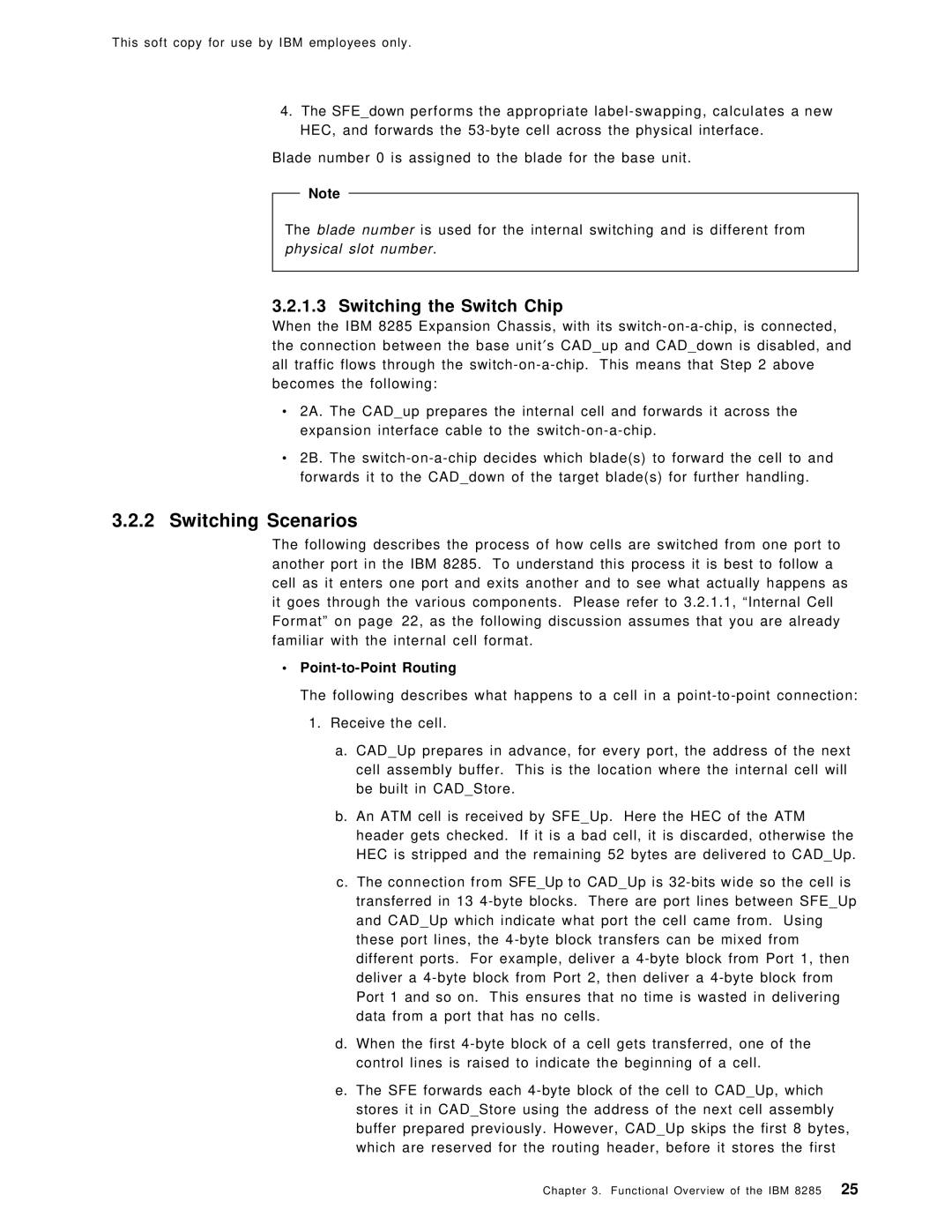
This soft copy for use by IBM employees only.
4.The SFE_down performs the appropriate
Blade number 0 is assigned to the blade for the base unit.
Note
The blade number is used for the internal switching and is different from physical slot number.
3.2.1.3 Switching the Switch Chip
When the IBM 8285 Expansion Chassis, with its
•2A. The CAD_up prepares the internal cell and forwards it across the expansion interface cable to the
•2B. The
3.2.2Switching Scenarios
The following describes the process of how cells are switched from one port to another port in the IBM 8285. To understand this process it is best to follow a cell as it enters one port and exits another and to see what actually happens as it goes through the various components. Please refer to 3.2.1.1, ªInternal Cell Formatº on page 22, as the following discussion assumes that you are already familiar with the internal cell format.
•Point-to-Point Routing
The following describes what happens to a cell in a
1.Receive the cell.
a.CAD_Up prepares in advance, for every port, the address of the next cell assembly buffer. This is the location where the internal cell will be built in CAD_Store.
b.An ATM cell is received by SFE_Up. Here the HEC of the ATM header gets checked. If it is a bad cell, it is discarded, otherwise the HEC is stripped and the remaining 52 bytes are delivered to CAD_Up.
c.The connection from SFE_Up to CAD_Up is
d.When the first
e.The SFE forwards each
Chapter 3. Functional Overview of the IBM 8285 25
